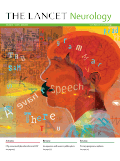
Multiple Sclerosis and Related Disorders
Scope & Guideline
Exploring groundbreaking insights in multiple sclerosis.
Introduction
Aims and Scopes
- Clinical and Epidemiological Research:
The journal emphasizes studies that explore the clinical characteristics, epidemiology, and natural history of multiple sclerosis, providing valuable insights into the disease's progression and factors influencing its course. - Therapeutic Advances and Treatment Protocols:
It covers research on the efficacy and safety of disease-modifying therapies (DMTs) and other treatment modalities, including novel therapies, their impact on quality of life, and management strategies for MS and related disorders. - Neuroimmunology and Pathophysiology:
Research on the underlying immunological mechanisms and neurobiological changes associated with MS is a key focus, aiming to enhance understanding of disease mechanisms and identify potential therapeutic targets. - Patient-Reported Outcomes and Quality of Life:
The journal prioritizes studies that assess patient-reported outcomes, including quality of life, mental health, and the psychosocial impacts of living with MS, emphasizing a holistic approach to patient care. - Innovative Diagnostic Techniques:
Research exploring advanced diagnostic tools and biomarkers for MS, including imaging techniques and laboratory assays, is highlighted to improve diagnostic accuracy and patient stratification. - Multidisciplinary Approaches to Care:
The journal promotes studies that investigate the effectiveness of multidisciplinary care models, including rehabilitation, physical therapy, and psychological support for MS patients.
Trending and Emerging
- Impact of COVID-19 on MS Patients:
Research exploring the effects of COVID-19 on MS patients, including vaccine responses and disease management during the pandemic, has surged, reflecting the urgency of understanding this intersection. - Telemedicine and Remote Care Models:
There is a growing emphasis on studies evaluating telehealth interventions and their effectiveness in managing MS, driven by the need for accessible care during the pandemic. - Neuropsychological and Cognitive Function Studies:
Increased attention is being given to the assessment and management of cognitive impairment in MS patients, focusing on innovative interventions and understanding the neuropsychological aspects of the disease. - Patient-Centered Care and Shared Decision-Making:
Research highlighting the importance of patient perspectives, shared decision-making, and personalized care approaches is gaining traction, indicating a shift towards more holistic and inclusive treatment strategies. - Biomarkers and Predictive Modeling:
Emerging studies focusing on biomarkers, such as neurofilament light chains, and their role in predicting disease progression and treatment response are trending, reflecting advancements in precision medicine. - Lifestyle Interventions and Holistic Approaches:
There is an upward trend in research examining the impact of lifestyle factors, including diet and exercise, on MS symptom management and overall health outcomes, emphasizing a comprehensive approach to care.
Declining or Waning
- Basic Science Research:
There appears to be a declining focus on basic science studies that explore fundamental biological mechanisms of MS, as the journal increasingly prioritizes clinical and translational research. - Historical Epidemiological Studies:
Research focusing solely on historical epidemiological trends without contemporary relevance may be waning, as the journal shifts towards studies that provide actionable insights for current clinical practice. - Single-Disorder Focus:
There is a noticeable reduction in publications that focus exclusively on multiple sclerosis, with a growing trend towards comparative studies involving related disorders, such as neuromyelitis optica spectrum disorders. - Pharmacovigilance Studies without Clinical Implications:
Studies that examine adverse drug reactions in isolation, without linking findings to clinical outcomes or treatment strategies, have become less common.
Similar Journals

Aktualnosci Neurologiczne
Connecting Global Minds in NeurologyAktualnosci Neurologiczne is a renowned open-access journal dedicated to the field of neurology, published by Medical Communications. As a crucial platform for the dissemination of neurological research, it has been operational since 2005, fostering an inclusive environment for scientific discourse and innovation. With an ISSN of 1641-9227, the journal aims to bridge the gap between clinical practice and research, offering a diverse range of articles that cover the latest developments in neurological science. Although its coverage in Scopus was discontinued after 2017, the journal continues to maintain a robust archive of scholarly articles that contribute to understanding neurological disorders. Researchers, healthcare professionals, and students interested in the latest trends and studies in neurology will find Aktualnosci Neurologiczne an invaluable resource, providing insights that drive advancements in the field. The journal operates from its address in Warsaw, Poland, and invites contributions from the global research community to enrich its content and impact.

Neurology Research International
Fostering Global Collaboration in NeurologyNeurology Research International, published by HINDAWI LTD, is an esteemed open access journal that has been serving the neurology community since 2010. With its ISSN 2090-1852 and E-ISSN 2090-1860, this journal aims to foster knowledge dissemination and facilitate dialogue surrounding key issues in neurology and clinical neuroscience, making it a vital resource for researchers, clinicians, and students alike. It operates from the United States, with its administrative hub located in London, England. As of 2023, the journal has been positioned in the Q3 category for both neurology and clinical neurology, reflecting its commitment to advancing research within these critical fields. With a current Scopus rank of #216/400 in clinical neurology and a #113/192 in neuroscience, and a converged publication timeline from 2010 to 2024, Neurology Research International is dedicated to promoting high-quality research that addresses contemporary challenges and innovations in neurological science. By offering open access since its inception, it ensures that cutting-edge research is freely available, aligning with the global push towards accessible scientific communication.

Ideggyogyaszati Szemle-Clinical Neuroscience
Exploring Neurological Insights for a Healthier TomorrowIdeggyogyaszati Szemle-Clinical Neuroscience, an esteemed publication under the auspices of LITERATURA MEDICA, serves as a pivotal platform in the field of neurology and clinical neuroscience. Established in Hungary, this journal has been committed to advancing the understanding of neurological disorders and treatments since its inception. With its ISSN 0019-1442 and E-ISSN 2498-6208, it provides a unique local perspective alongside valuable contributions to the global discourse in neuroscience. Despite earning a Q4 quartile ranking in both Neurology and Clinical Neurology, the journal remains dedicated to publishing high-quality research that contributes to the scientific community's collective knowledge. Its coverage spans significant converged years from 1954 to 1985 and now continues through 2024, reflecting a rich historical foundation. Recognizing the importance of open access, the journal strives to enhance accessibility, albeit currently lacking a formal open-access model. Researchers, professionals, and students in the field will find in Ideggyogyaszati Szemle a resource vital for keeping abreast of emerging trends and findings in neurological science.

EUROPEAN JOURNAL OF PAEDIATRIC NEUROLOGY
Uniting knowledge and innovation in pediatric neurology.European Journal of Paediatric Neurology, published by Elsevier Science Ltd, is a premier academic journal dedicated to advancing the field of paediatric neurology. With its ISSN 1090-3798 and E-ISSN 1532-2130, this journal serves as a vital resource for researchers, clinicians, and students alike, focusing on the latest findings and innovative treatments in paediatric neurological disorders. The journal has established itself as a leading publication in its field, achieving a Q1 classification in Pediatrics, Perinatology and Child Health, and holding a reputable Q2 status in Clinical Neurology as of 2023. Positioned within the top 88th percentile in Pediatrics and the 76th percentile in Clinical Neurology according to Scopus ranks, it publishes rigorous peer-reviewed articles that contribute significantly to clinical practice and research. Although not open access, the journal provides vital insights into the complexities of neurological conditions affecting the pediatric population, making it an essential tool for scholars and professionals striving to improve child health outcomes. With a publication trajectory spanning from 1997 to 2024, it continues to be at the forefront of paediatric neurological research, inspiring innovation and collaboration in the scientific community.

Multiple Sclerosis International
Bridging research and practice for a world without MS.Multiple Sclerosis International is a leading open-access journal dedicated to advancing the scientific understanding of multiple sclerosis (MS) and related neurological disorders. Published by HINDAWI LTD since 2010, this journal serves as a vital resource for researchers, clinicians, and students alike, providing a platform for high-quality peer-reviewed articles that cover a diverse range of topics, including epidemiology, treatment strategies, and the latest advancements in MS research. With its commitment to open access, Multiple Sclerosis International ensures that critical findings are readily available to the global community, fostering collaborative efforts to improve patient outcomes and advance therapeutic approaches. The journal not only enhances scholarly discourse in the field but also significantly impacts clinical practices by presenting cutting-edge research and insights.

LANCET NEUROLOGY
Innovative Discoveries for Tomorrow's NeurologistsThe Lancet Neurology is a premier academic journal published by Elsevier Science Inc, specializing in the field of neurology. With a robust impact factor that signifies its authoritative presence, it consistently ranks in the Q1 category for clinical neurology according to the 2023 standards, positioning itself as the leading journal in its domain, ranking #1 out of 400 in Scopus' neurology rankings and placing in the 99th percentile. Since its establishment in 2002, it has provided a vital platform for disseminating innovative research and clinical advances related to neurological disorders. The journal’s precise focus includes cutting-edge studies on neurodegenerative diseases, stroke, epilepsy, and neuroimaging, which are essential for advancing clinical practice and improving patient outcomes. While it does not offer open access, readers can find high-impact research published monthly, making it indispensable for practitioners, researchers, and students eager to stay at the forefront of neurological science.

NEUROLOGY
Advancing neurological science for a healthier tomorrow.NEUROLOGY, published by Lippincott Williams & Wilkins, stands as a premier journal in the field of neurology, holding an esteemed Q1 category ranking in clinical neurology as of 2023. Established in 1951, this journal has been a critical resource for the dissemination of cutting-edge research and clinical advancements, with an impressive Scopus rank of 24 out of 400, placing it in the 94th percentile among its peers. NEUROLOGY serves as a vital platform for neurologists, researchers, and medical professionals seeking to stay abreast of the latest findings and innovations in the treatment and understanding of neurological disorders. With its rigorous peer-review process and commitment to excellence, NEUROLOGY remains essential reading for all individuals dedicated to advancing the science and practice of neurology, contributing significantly to the ongoing dialogue in this vital area of medicine.

Multiple Sclerosis Journal-Experimental Translational and Clinical
Pioneering Pathways from Lab to Clinic in MS StudiesMultiple Sclerosis Journal-Experimental Translational and Clinical, published by SAGE Publications, Inc., is an essential open-access platform since 2015 dedicated to advancing research in the field of multiple sclerosis and related neurological disorders. With an ISSN of N/A and an E-ISSN of 2055-2173, the journal aims to bridge the gap between experimental studies and clinical applications, offering valuable insights into cellular and molecular neuroscience as well as clinical neurology. The journal holds a reputable Q3 ranking in Cellular and Molecular Neuroscience and a Q2 ranking in Neurology (Clinical) for 2023, indicating its significant contribution to these fields. Positioned at the intersection of scientific discovery and clinical practice, the Multiple Sclerosis Journal serves as an indispensable resource for researchers, clinicians, and students dedicated to improving outcomes for individuals affected by multiple sclerosis and related disorders. With a Scopus ranking of #163/400 in Medicine - Neurology and #67/97 in Neuroscience, this journal continues to play a pivotal role in shaping the future of neurological research and therapy.

Journal of Clinical Neurology
Fostering Collaboration in Clinical NeurologyThe Journal of Clinical Neurology, published by the Korean Neurological Association, is a prominent open-access journal that has been disseminating crucial findings in the field of neurology since its inception in 2008. With an ISSN of 1738-6586 and an E-ISSN of 2005-5013, this journal provides a vital platform for researchers and clinicians to share innovative research, reviews, and case studies that advance understanding and treatment of neurological disorders. The journal has established its reputation, achieving a Q3 ranking in Neurology and a Q2 ranking in Clinical Neurology in 2023, placing it among the noteworthy sources in the medical community. With its open-access format since 2011, it facilitates broad dissemination of knowledge to both the scientific community and the public, supporting the journal's mission to enhance clinical practice and promote neurological health in South Korea and beyond. As of October 2023, it holds influential Scopus ranks, reflecting its impact and relevance in the ever-evolving landscape of neuroscience. Researchers, professionals, and students alike are encouraged to contribute to and engage with the ongoing discourse by submitting their work and accessing a wealth of resources through this esteemed publication.

NEUROLOGIC CLINICS
Illuminating the complexities of the nervous system.NEUROLOGIC CLINICS, published by W B SAUNDERS CO-ELSEVIER INC, stands as a leading journal in the field of clinical neurology, boasting an impressive impact factor that reflects its significant contributions to neurological research and clinical practice. With an ISSN of 0733-8619 and E-ISSN of 1557-9875, this journal provides a critical platform for the dissemination of innovative research, case studies, and reviews focusing on various aspects of neurology, from diagnosis to treatment interventions. As part of its commitment to advancing the understanding of neurological disorders, NEUROLOGIC CLINICS is categorized in the Q2 quartile for Neurology (clinical) in 2023, indicating its robust standing within the academic community. It is recognized for its rigorous peer-review process and is indexed in Scopus, ranking #147 out of 400 in its field with a notable 63rd percentile. The journal, which dates back to 1983 and continues to publish vital findings up to 2024, is an invaluable resource for researchers, healthcare professionals, and students dedicated to enhancing their knowledge and clinical skills in neurology. Subscribe now to stay abreast of current advancements and expand your expertise in this dynamic field.